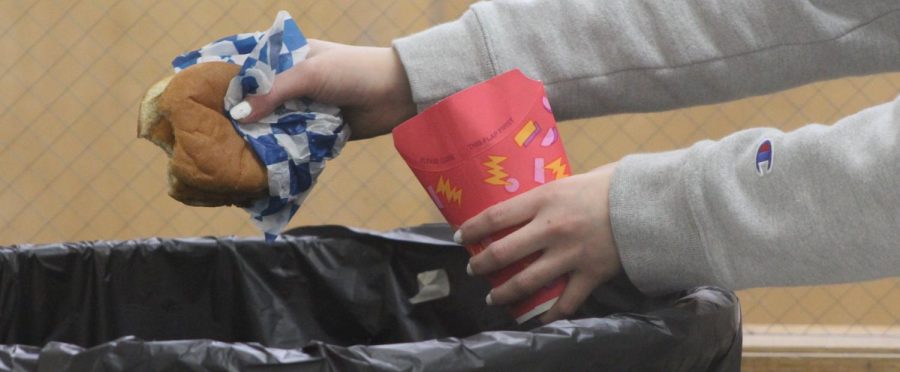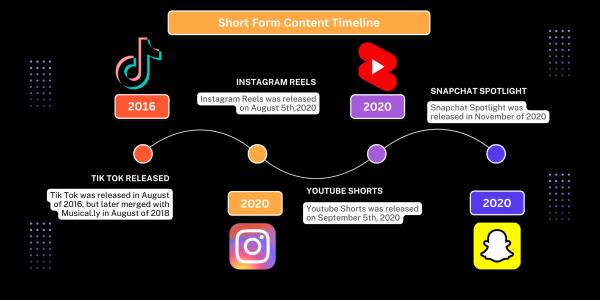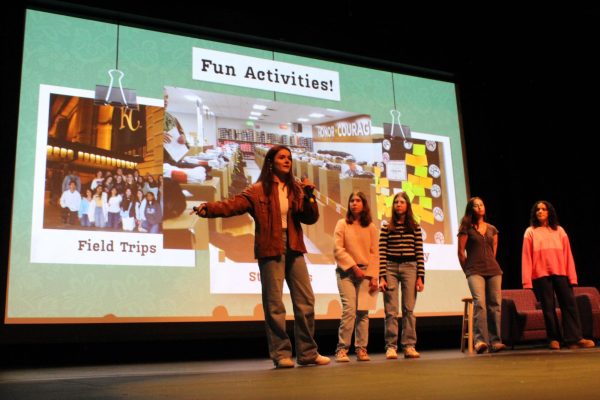Food Waste: Chew on This
When we finish a meal and decide we’re full, we simply walk over to the trash can, scrape off our plate and continue with our day. Simple, right? But when we throw our food “away,” what does that truly entail? Where is it going and what does that mean for our planet and the people living on it?
Every year, 1.3 billion tons of food are thrown away across the globe. This is equivalent to one third of all the food that is grown each year, according to The New York Times. Along with this statistic, one may consider the issue of hunger, as the two go hand-in-hand. In the U.S. alone, one in every eight people have trouble putting enough food on the table, according to the Natural Resource Defense Council, yet 40 percent of the food available in the country is never even eaten.
The New York Times also highlights how privilege furthers this crisis. It is in wealthy countries like the U.S. where nearly half of the food wasted is tossed out directly by consumers. Conversely, the paper reports that “very little food in poor countries is thrown out by consumers” because “it’s too precious.” People with higher incomes are prone to purchasing too much food and leaving plates unfinished. For less fortunate families, who spend a larger portion of their income on food to survive, this is not something they can afford to do.
With the growing global population projected to reach almost 10 billion people by the year 2050, according to research from the United Nations, looking at waste and discussing ways to prevent it are becoming more important. Prevention can mean taking action on a personal level, but it can also happen on a larger scale, by way of systematic action in restaurants and grocery stores, to name a few.
In 2015, the U.S.’s “first-ever food loss and waste reduction goal” was announced by the U.S. Department of Agriculture and the Environmental Protection Agency, which called for a reduction of 50 percent by 2030. Participating companies, referred to as “Champions,” publicly pledged to make efforts to cut back on their waste “in their own operations and periodically report their progress on their website.” These include Walmart, Campbell Soup, Unilever and Kellogg’s.
Steps to prevent excess waste also occur at our school. One main place this begins is obvious: the school cafeteria, where hundreds of students dine every day. Mr. Daniel Lyon, the school’s food service director, described what goes on behind the scenes in the kitchen, explaining how each food line has different disposal steps.
The Origin line — where the entrees switch every day — typically sells out, so there isn’t waste. If there is not a sellout, the kitchen staff takes the leftovers and uses them in other foods, like sauces, Mr. Lyon said. Sometimes, faculty members simply eat the leftovers. The sandwich line doesn’t produce much waste either since toppings are stored and reused the next day, he added.
Conversely, any pizza or foods in the Grill line, such as burgers and sandwiches, are typically sent off to landfills. Mr. Lyon explained how he’s attempted setting up a donation system with local shelters, but high-protein items — chicken, beef or foods containing egg or dairy — aren’t accepted. This is because of issues with food safety; temperature requirements make them difficult to transport, as they cool down and need to be reheated.
In terms of anticipating and preventing waste, Mr. Lyon said that “we have prep guides that help us with actually not over-prepping on certain items…I give [the kitchen staff] a week’s’ worth of recipes.” They then look them over and proactively decide on the necessary quantities of each food to order so there isn’t too much left over.
Highlighting a struggle, he said that “sometimes we have a great-selling item and we run out, so we have to bump [the amount of food to make] up…[and] next time it doesn’t sell as well, so we have to bump it down.” He concluded, “it could be a hit or miss.”
One way that both businesses and individuals can help reduce food waste is to compost (read more about Ms. Holtsford’s composting efforts in the sidebar on the next page). There are different ways a person can choose to compost, explained foods teacher Mrs. Katie Gallivan: “You can have a crank system, where you would put all your scraps and…layer green, brown, green, brown.” These consist of natural materials, like leaves, and food scraps, banana peels or potato skins, for example, that get mixed in on a regular basis. Another form is called vermicomposting, where worms directly break down food and release the nutrients.
Both styles turn leftover food back into lush, rich soil and aren’t difficult to perform. AP Environmental Science teacher Mrs. Jennifer Kahn emphasized how “you don’t have to be this huge mega-composter…it’s something that’s doable for an average person.”
With the help of Mrs. Kahn, as well as Mrs. Alice Leafblad and her special education classes, who’ve aided with in-school transport, food scraps have recently been brought upstairs from Mrs. Gallivan’s foods classes to Mr. Peter Olszewski’s classroom, where a bin is housing some worms for vermicomposting. He described it as a “way to open up conversations with kids,” since “just having it here, [they] ask questions.”
While individual efforts like these are helpful, concerns about the implementation of a more formal, schoolwide composting program were expressed by Mr. Lyon, which include the financial affordability of setting it up as well as difficulty maintaining it, as the school would have to designate both physical space and people to take care of it.
Despite these worries, these obstacles can be overcome. Mrs. Kahn stressed the importance of education as a means of sparking change. It’s vital to inform people how to compost, for “when we throw something ‘away,’” she explained, “it’s being transported to a hole in the ground, essentially, where it’s covered up and those resources aren’t really recoverable.”
Composting instead allows the foods’ nutrients to be returned back to the ground, but it needs to be done right, since the smallest “amounts of contamination of the wrong kind of food can lead to consequences that become difficult…[and] might attract pests, for example,” she said.
Mrs. Gallivan proposed that in order to educate everyone, she could perhaps help put together a Wakeup Wildcat video explaining how to compost and the reasons behind it, teaming up with “somebody else who had the same vision, like the science department or the special services.”
There are lots of other ways individuals can reduce their personal food waste. An article by the Food and Drug Administration lists actions to be taken at home, in stores and at restaurants:
- Utilize your freezer to preserve uneaten food.
- Learn about food safety precautions to take at home.
- Only buy as much meat and produce as you know you will consume.
- Don’t be afraid to purchase “ugly” fruit–while it looks different on the outside, it’s just as tasty inside as any of the others on the shelf.
- Take your leftover food home in a box or ask for a smaller portion size to begin with.
- Ask a friend if they want to finish the last couple bites for you.
So, next time you’re carrying your plate to the garbage, you may want to pause and think: Is a landfill really the best place for this?
Photo by Ariella Bucio.







![Senior River Thompson joins the Jazz Ensemble by singing “That Old Black Magic” by Mercer and Arlen Arr. Mark Taylor, along with senior Annie Brody on guitar and junior Thomas Teixeira on bass, earning big applause. “[The concert had] great energy because it's the last [jazz concert] of the year,” Brody said.](https://www.lhsdoi.com/wp-content/uploads/2025/04/Eight-That-Old-Black-Magic-600x400.jpg)
![Mr. Abullh Ali, manager/assistant, helps open Queen Yemeni Coffee in downtown Libertyville at 606 North Milwaukee Ave. With the help of employees such as manager and LHS senior Yousef Taha, they are able to bring the Yemeni and Ethiopian culture to Libertyville by using their Queen spices, cinnamon and cardamom in their drinks such as Adani Chai, which is inspired by Sheda, the Queen of Yemen and Ethiopia. “The history of our coffee [is] a long history and we believe that Yemen and Ethiopia started the coffee and we are bringing something unique to the community,” Mr. Ali said.](https://www.lhsdoi.com/wp-content/uploads/2025/04/Photo-1-600x400.jpg)


